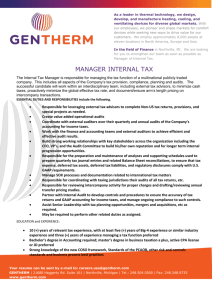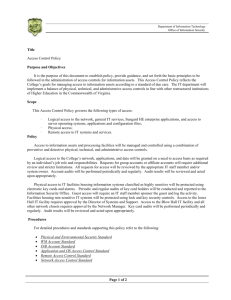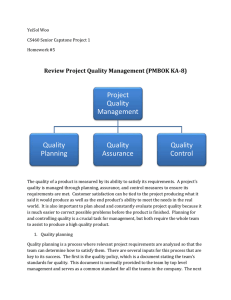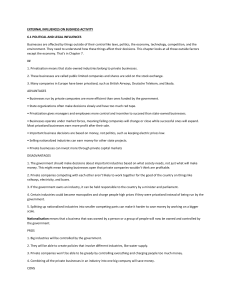AbstractID: 2247 Title: Theory of Quality Assurance
advertisement
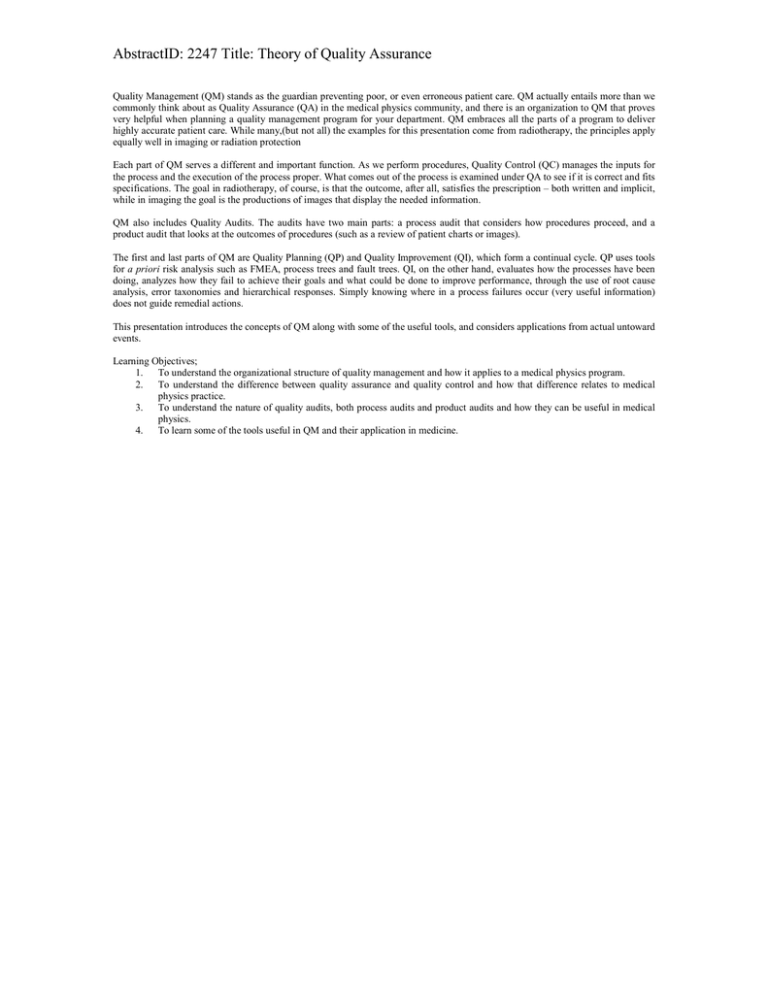
AbstractID: 2247 Title: Theory of Quality Assurance Quality Management (QM) stands as the guardian preventing poor, or even erroneous patient care. QM actually entails more than we commonly think about as Quality Assurance (QA) in the medical physics community, and there is an organization to QM that proves very helpful when planning a quality management program for your department. QM embraces all the parts of a program to deliver highly accurate patient care. While many,(but not all) the examples for this presentation come from radiotherapy, the principles apply equally well in imaging or radiation protection Each part of QM serves a different and important function. As we perform procedures, Quality Control (QC) manages the inputs for the process and the execution of the process proper. What comes out of the process is examined under QA to see if it is correct and fits specifications. The goal in radiotherapy, of course, is that the outcome, after all, satisfies the prescription – both written and implicit, while in imaging the goal is the productions of images that display the needed information. QM also includes Quality Audits. The audits have two main parts: a process audit that considers how procedures proceed, and a product audit that looks at the outcomes of procedures (such as a review of patient charts or images). The first and last parts of QM are Quality Planning (QP) and Quality Improvement (QI), which form a continual cycle. QP uses tools for a priori risk analysis such as FMEA, process trees and fault trees. QI, on the other hand, evaluates how the processes have been doing, analyzes how they fail to achieve their goals and what could be done to improve performance, through the use of root cause analysis, error taxonomies and hierarchical responses. Simply knowing where in a process failures occur (very useful information) does not guide remedial actions. This presentation introduces the concepts of QM along with some of the useful tools, and considers applications from actual untoward events. Learning Objectives; 1. To understand the organizational structure of quality management and how it applies to a medical physics program. 2. To understand the difference between quality assurance and quality control and how that difference relates to medical physics practice. 3. To understand the nature of quality audits, both process audits and product audits and how they can be useful in medical physics. 4. To learn some of the tools useful in QM and their application in medicine.



